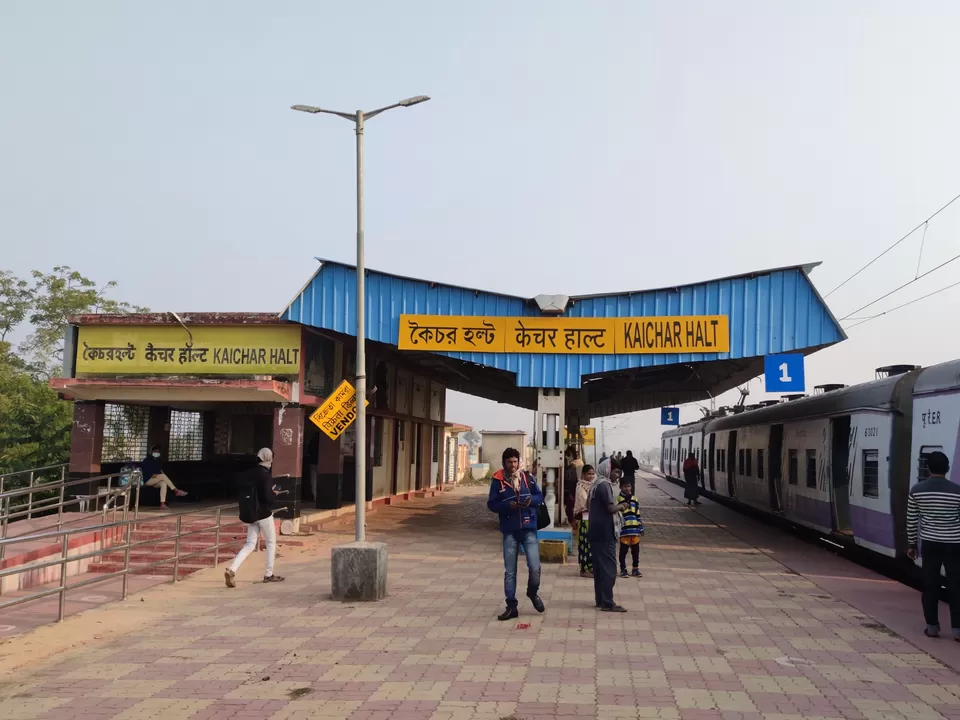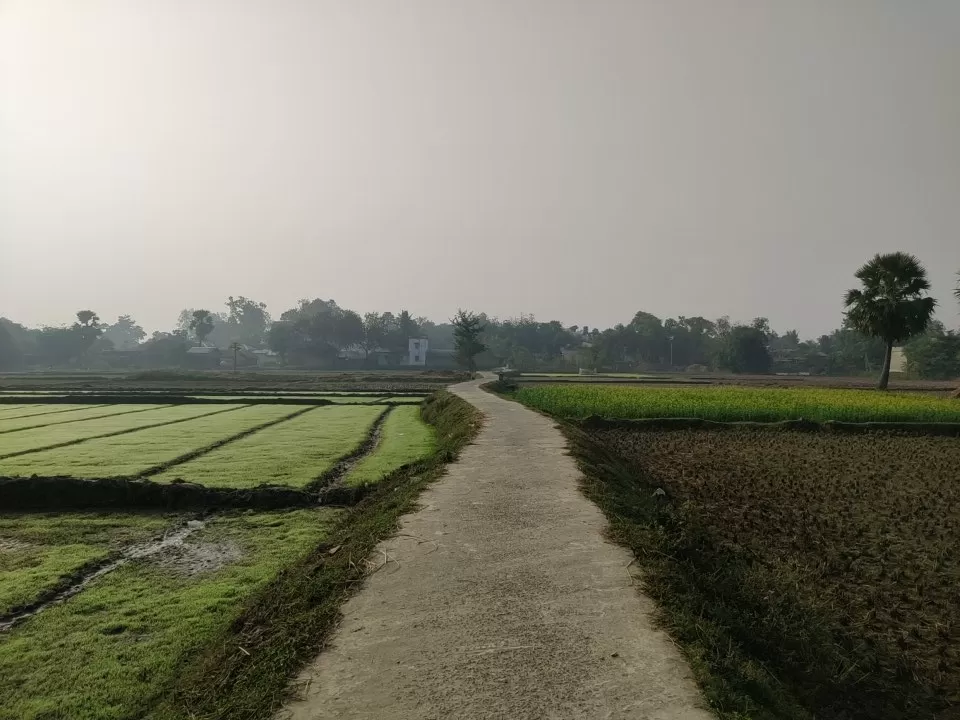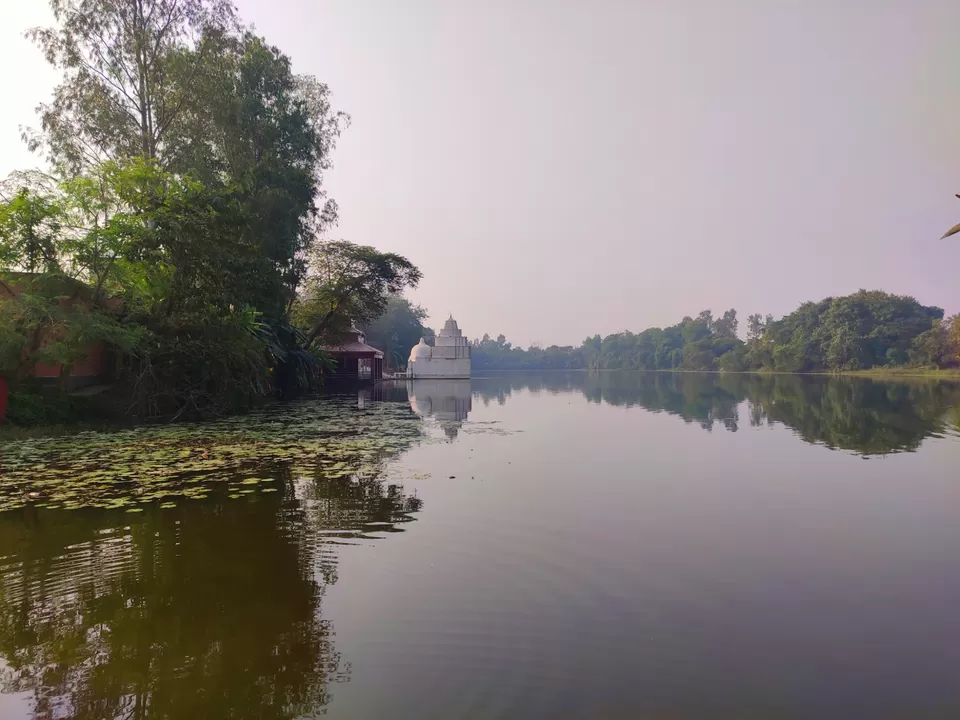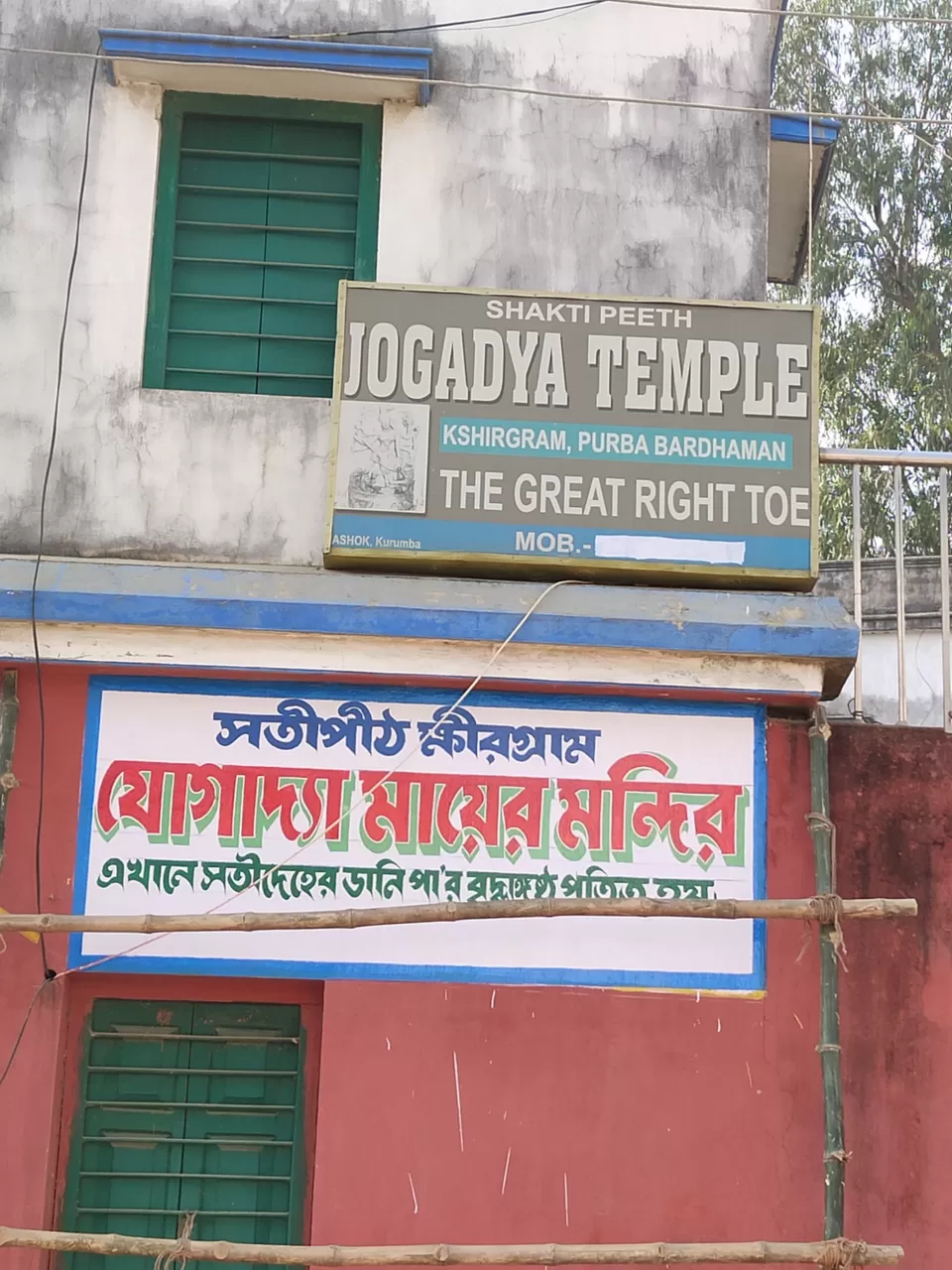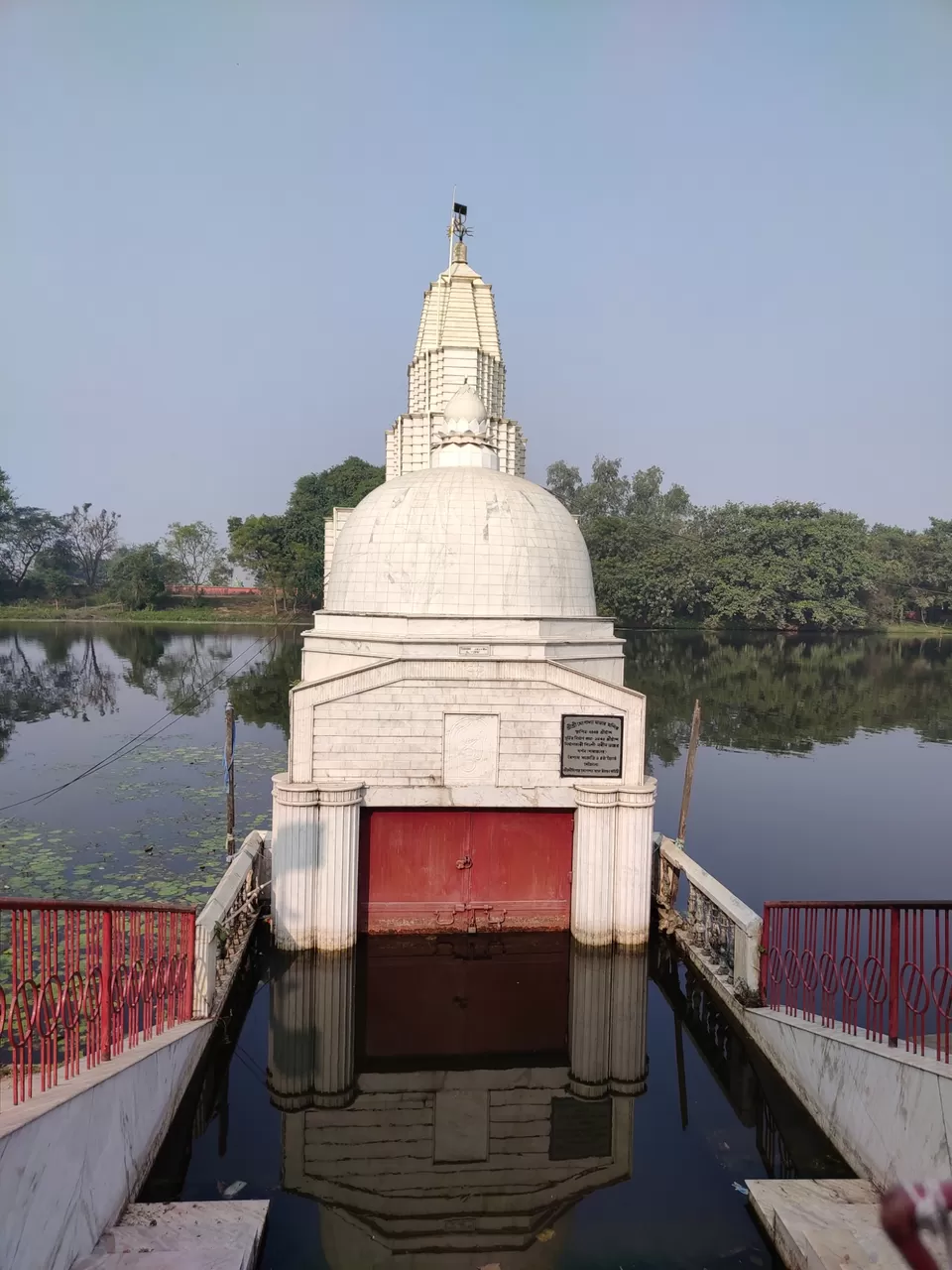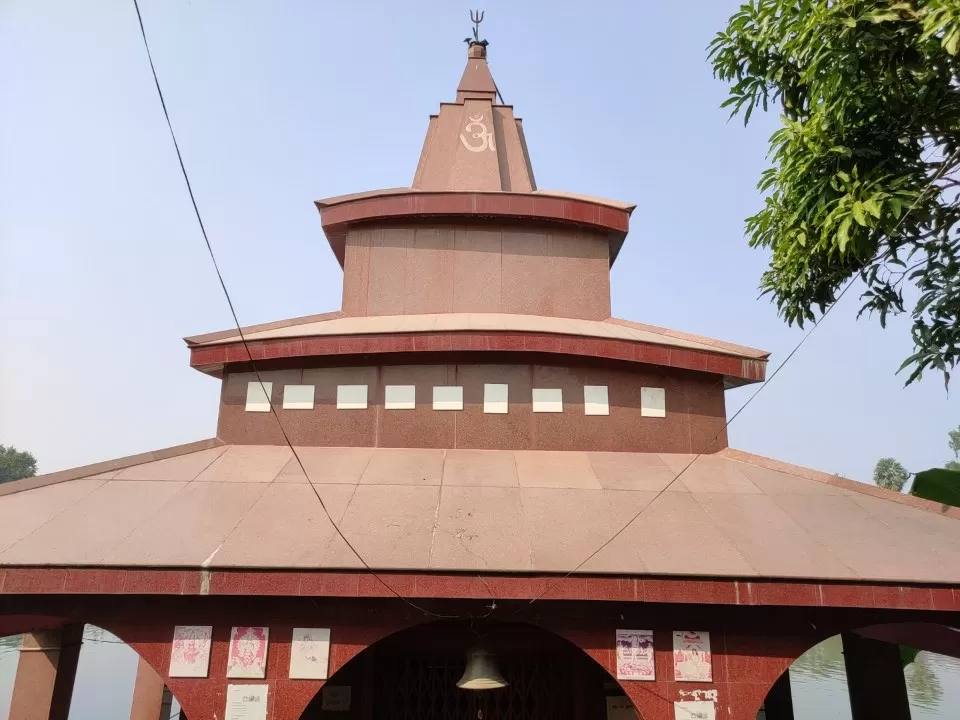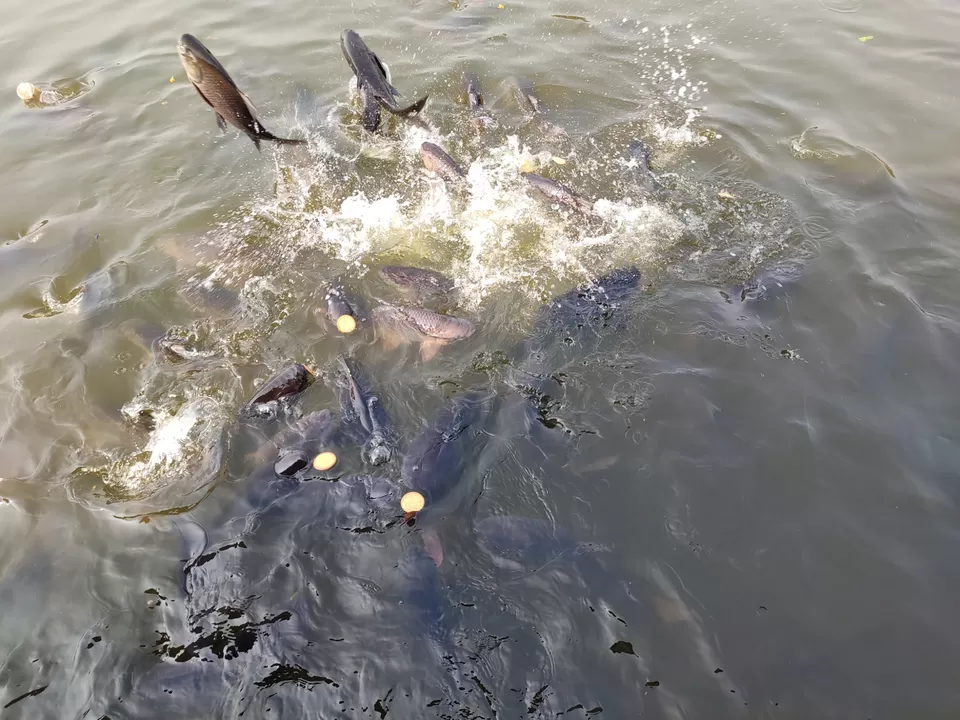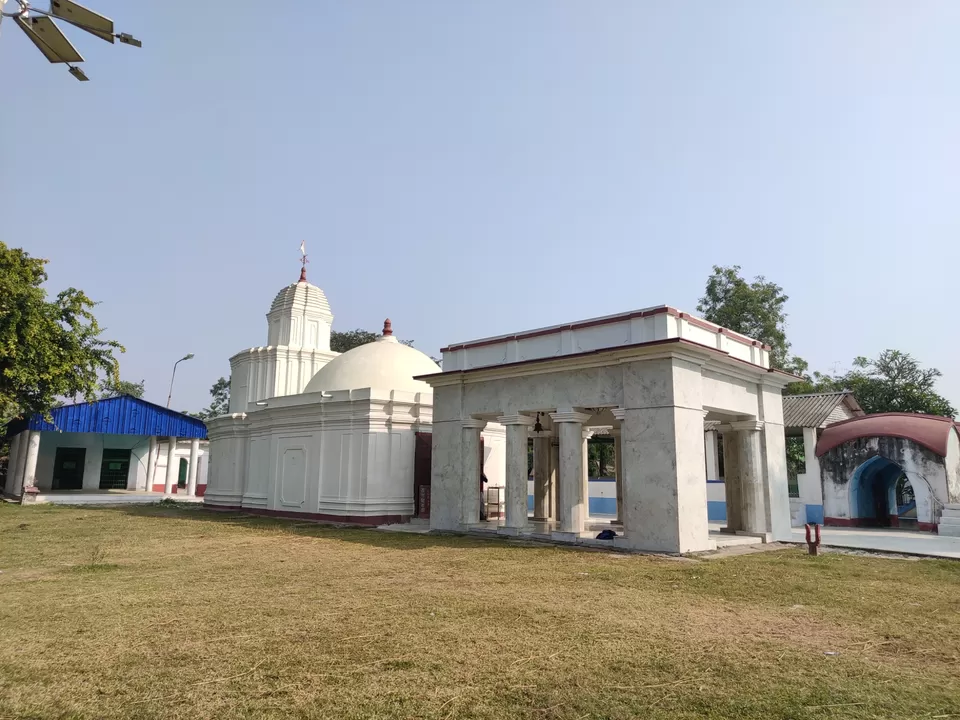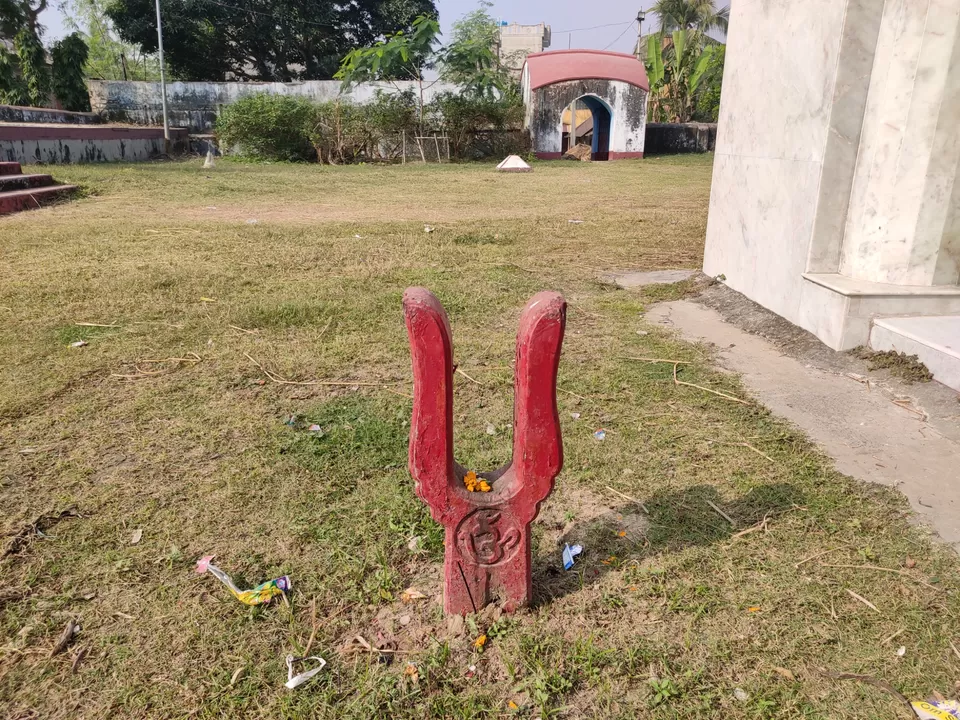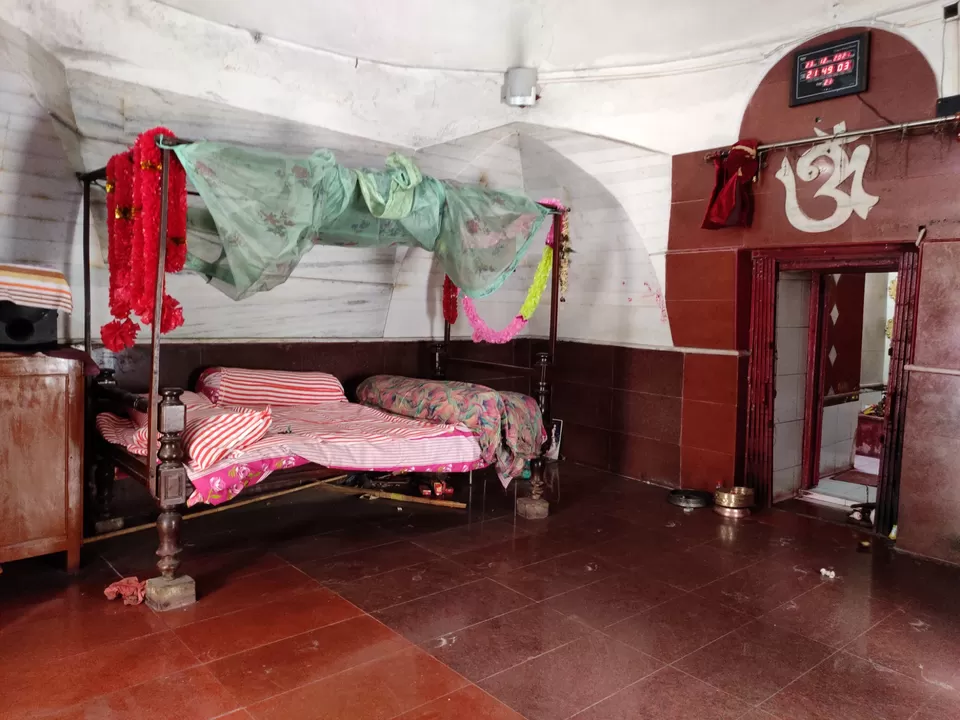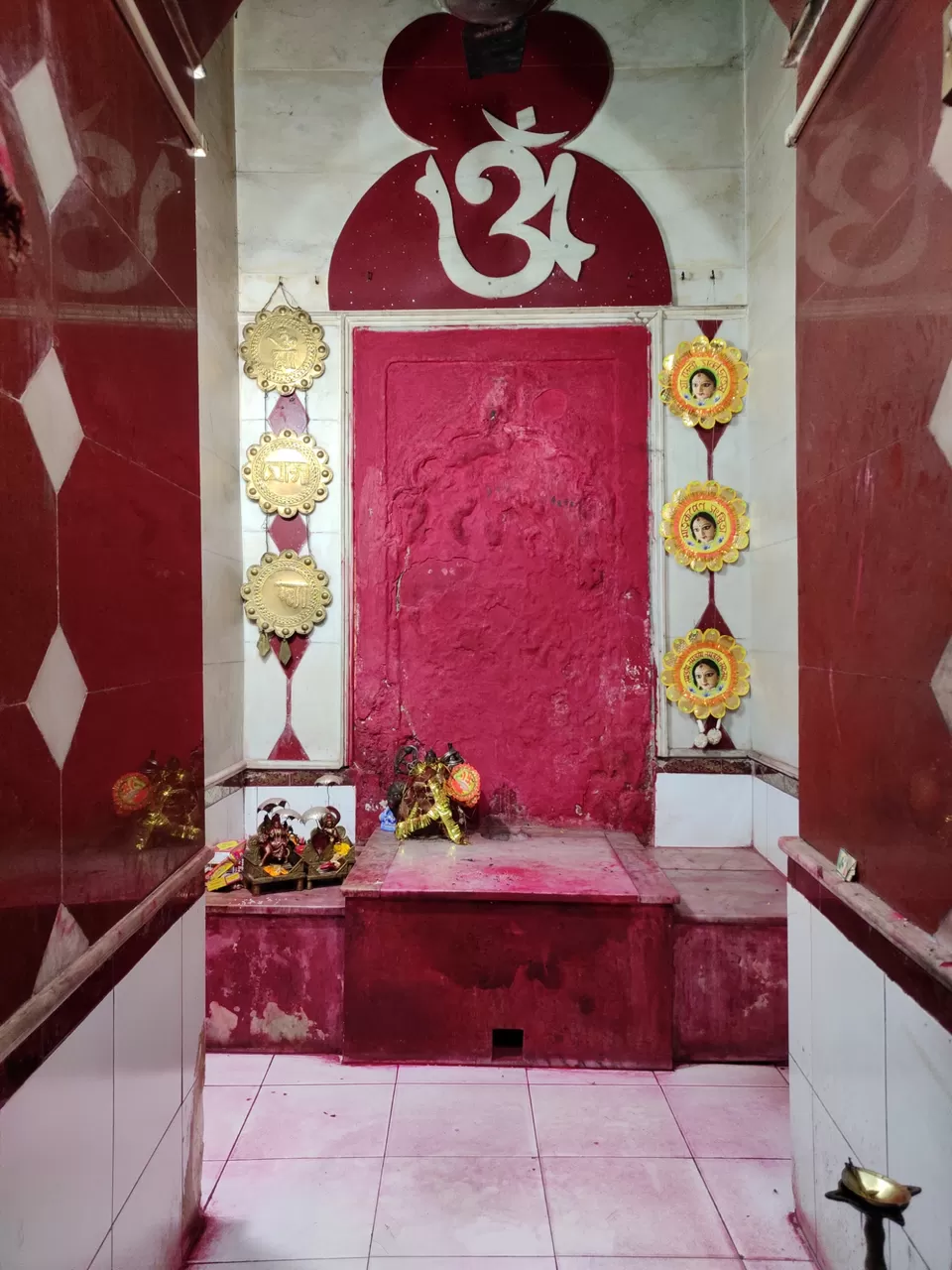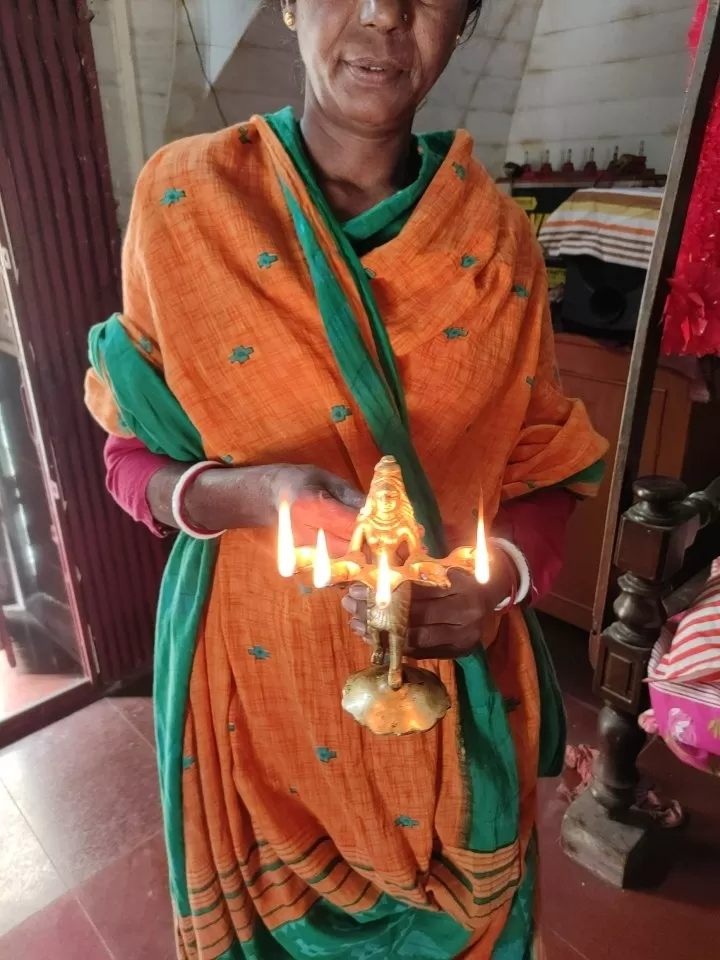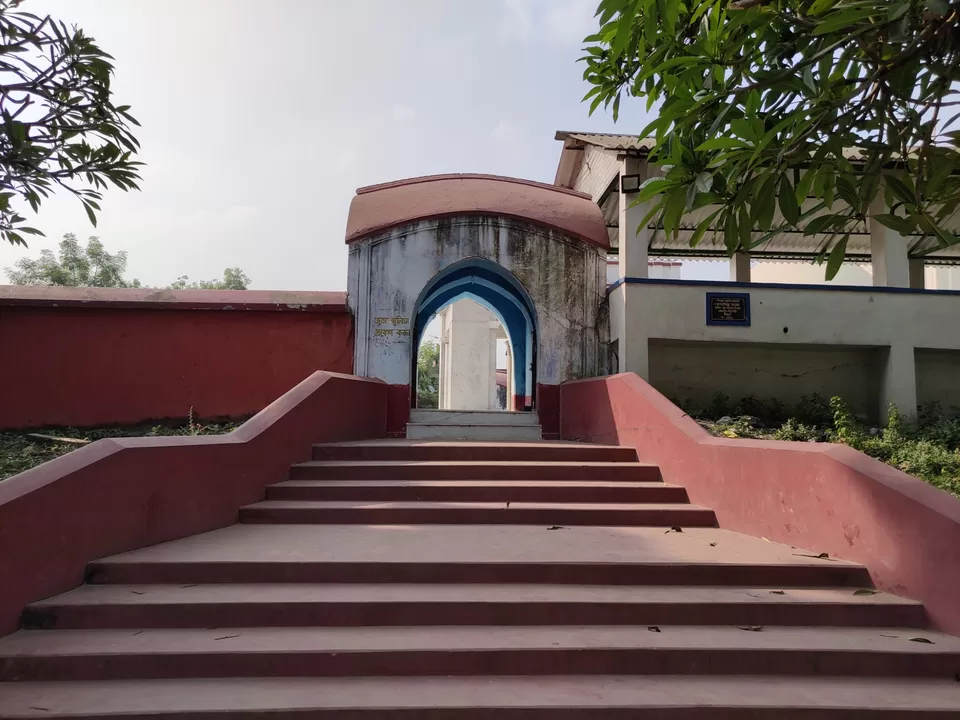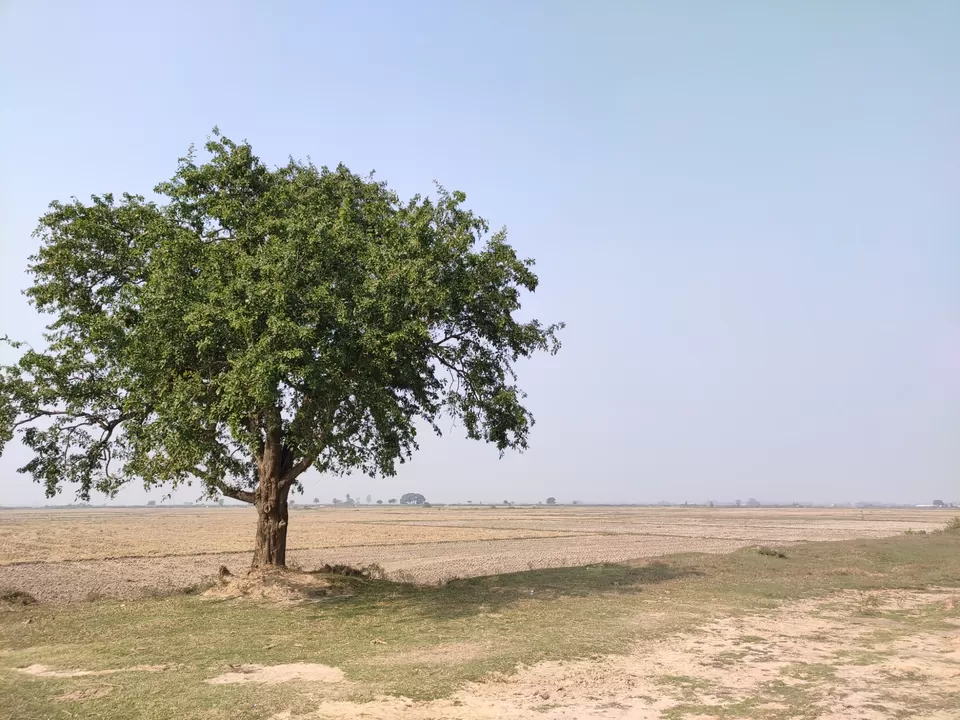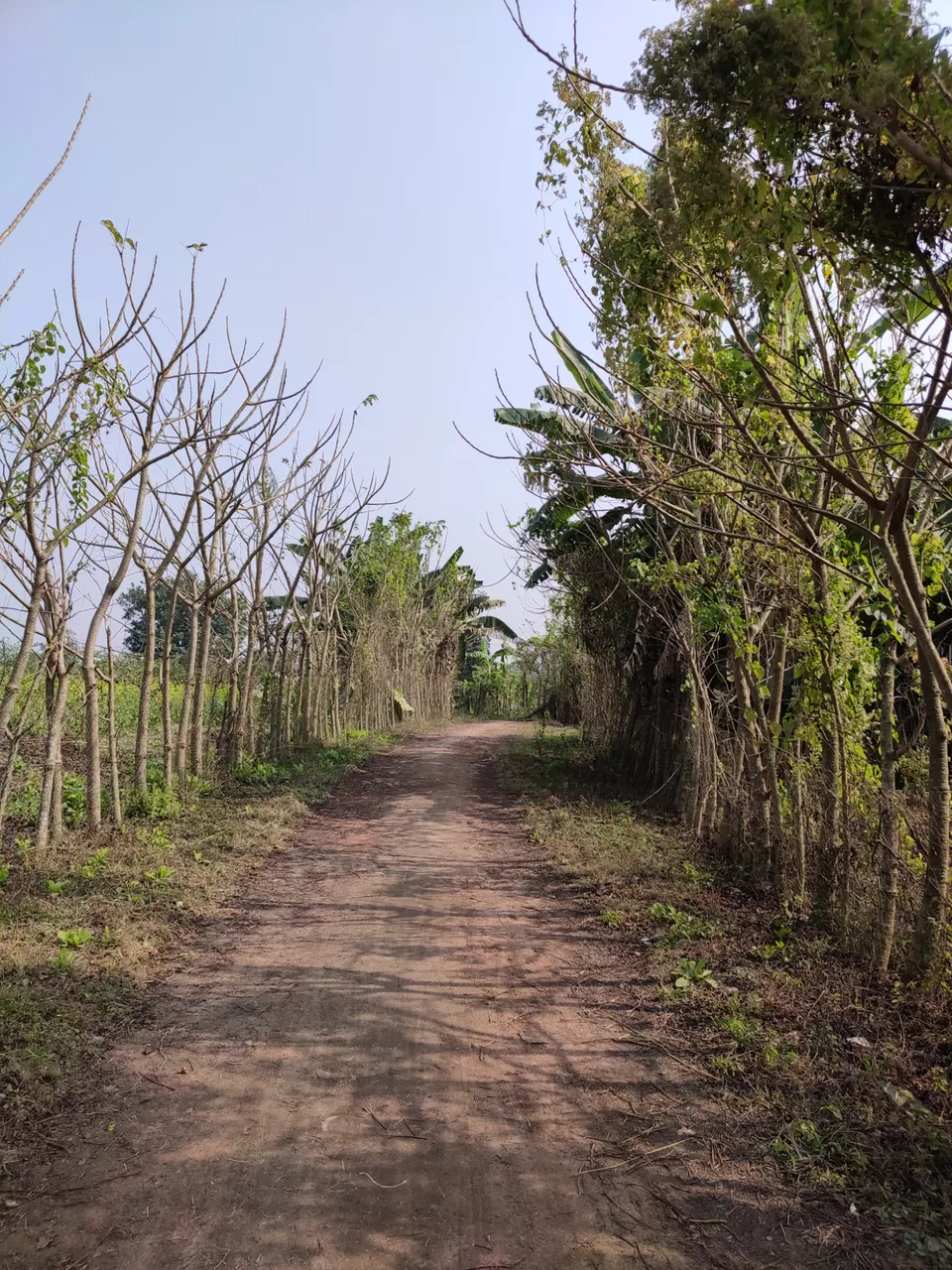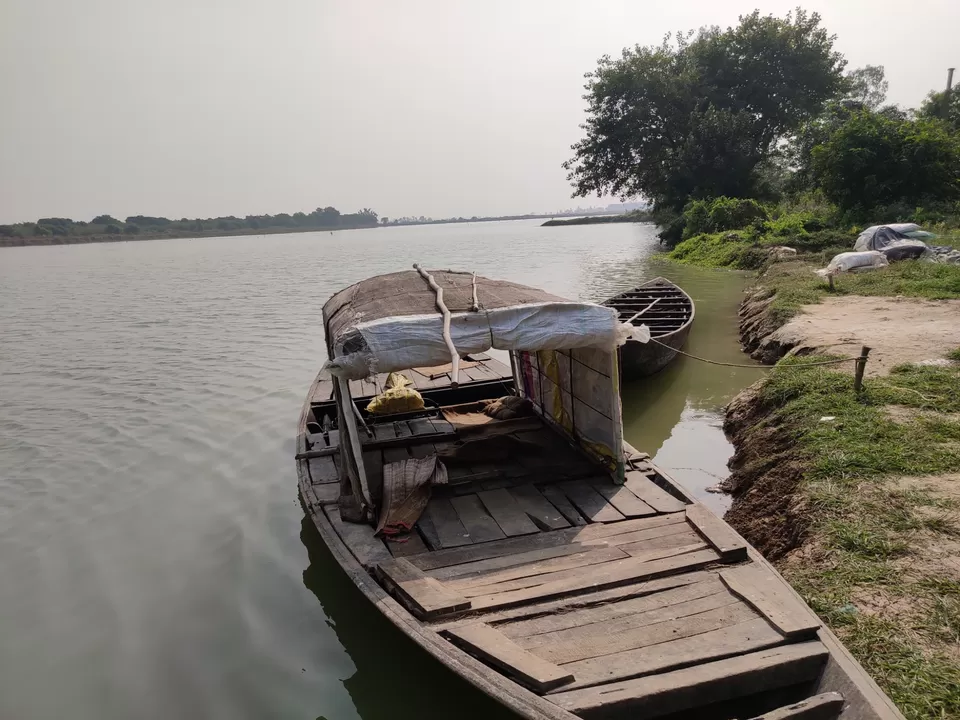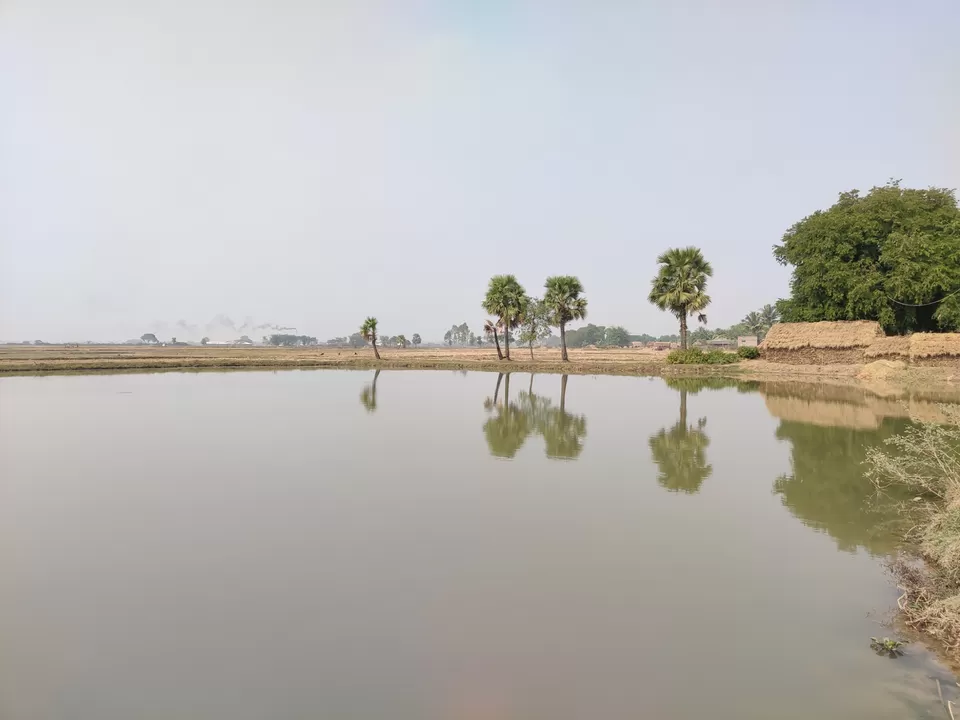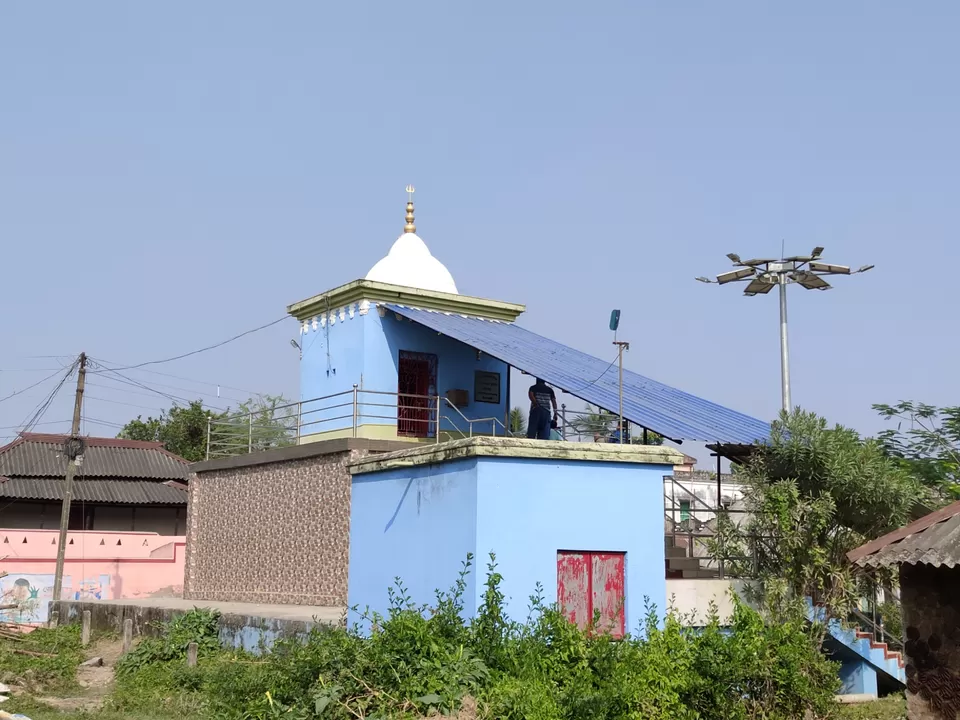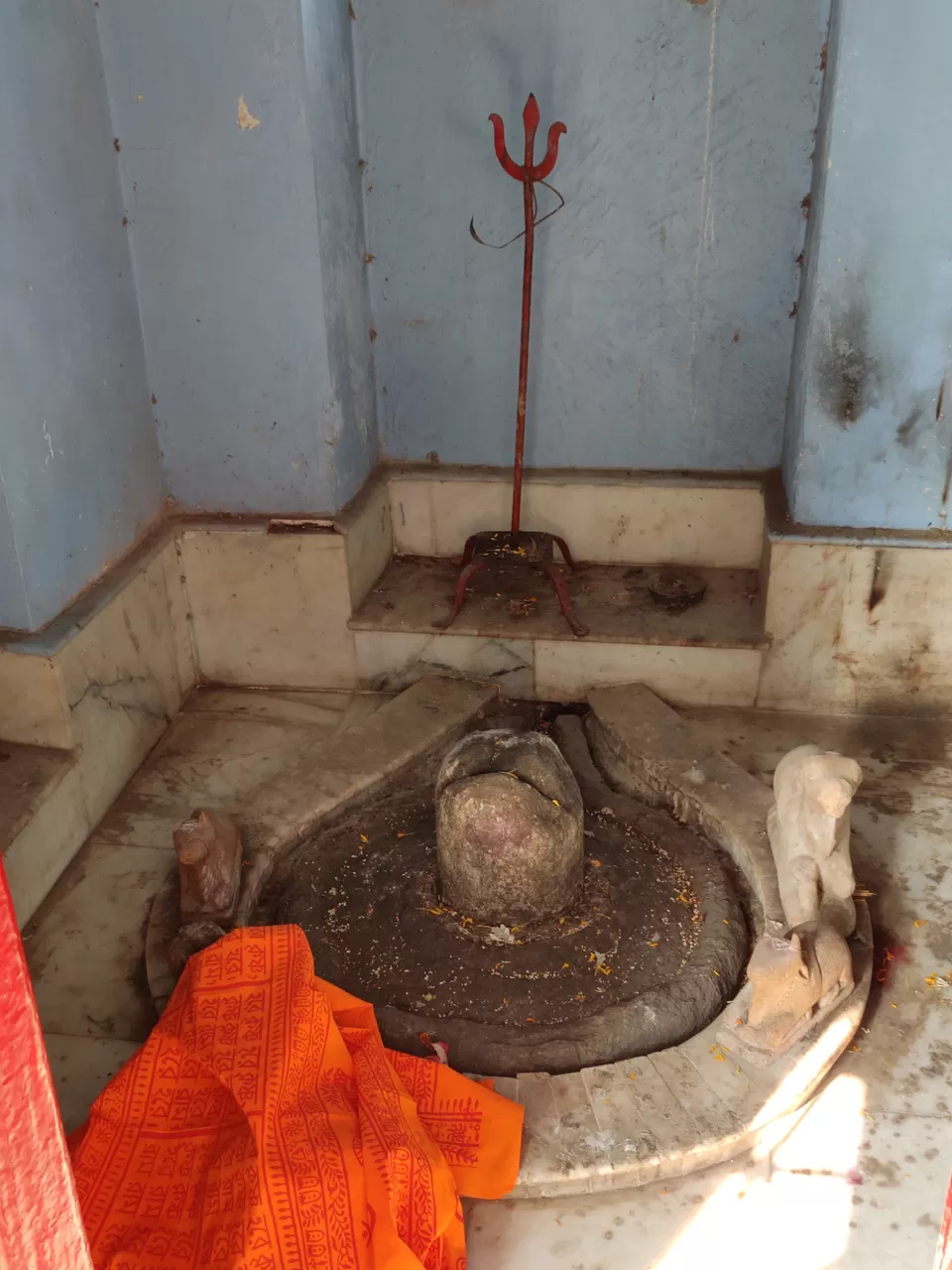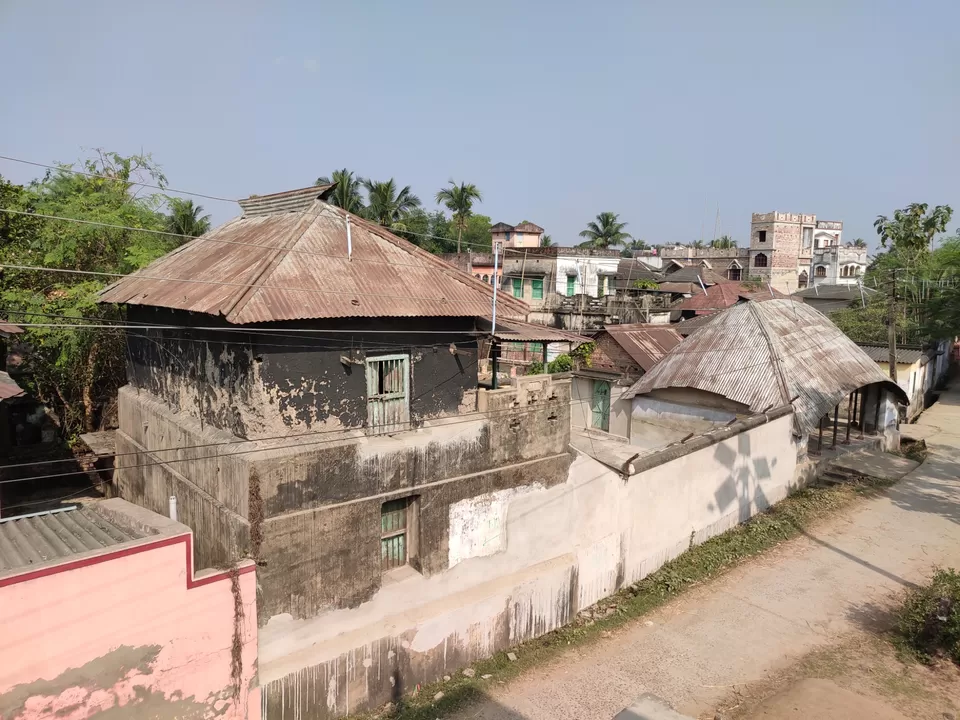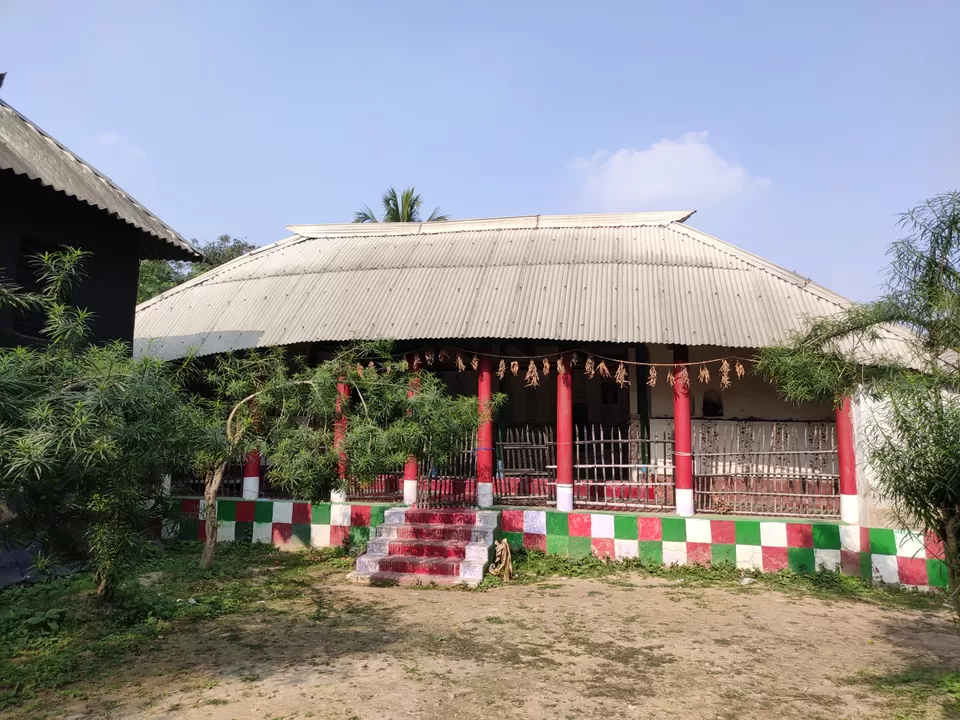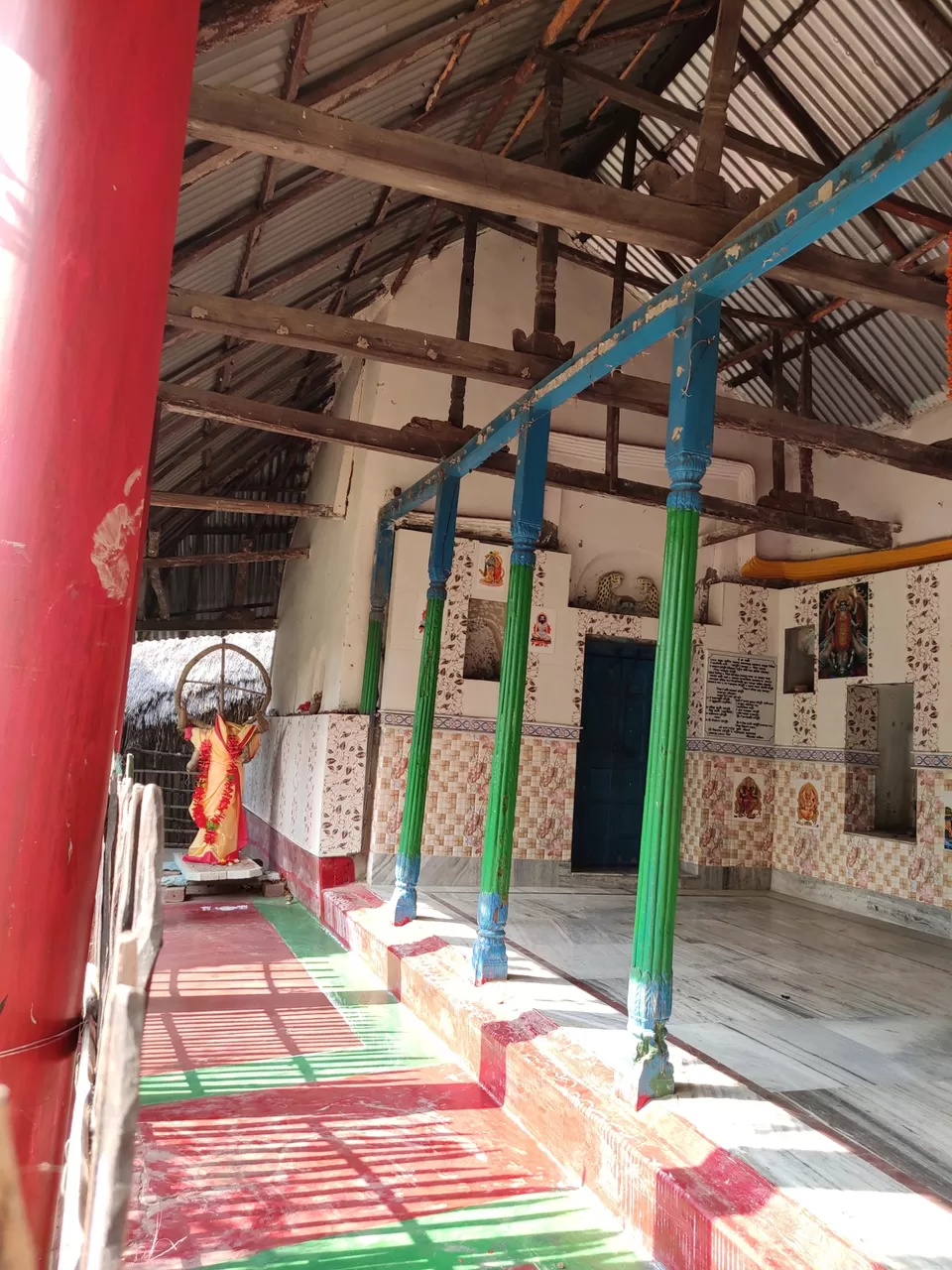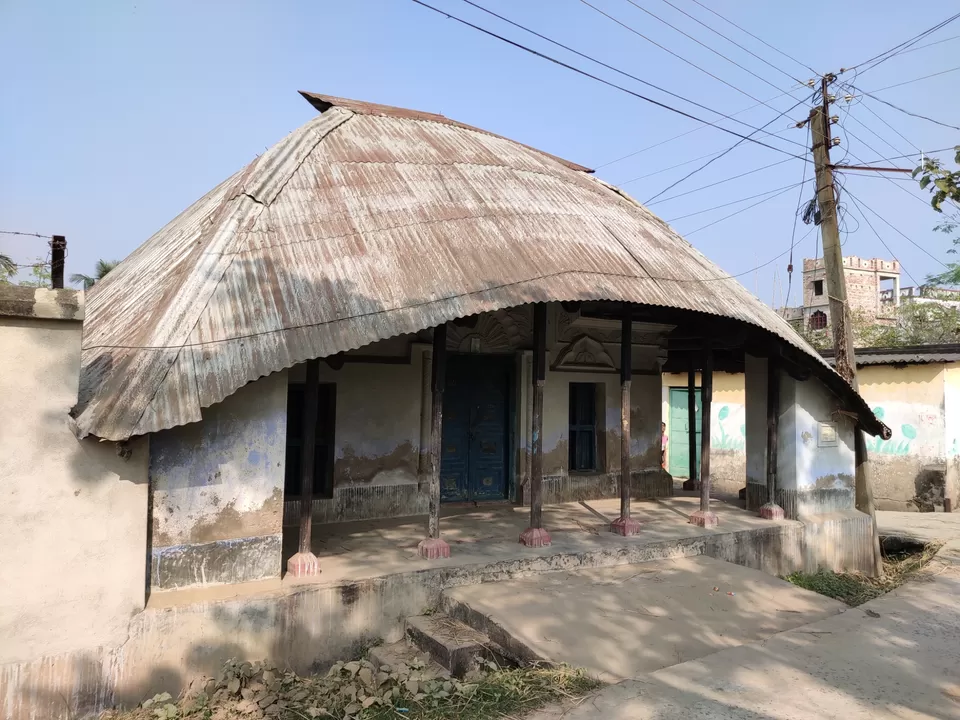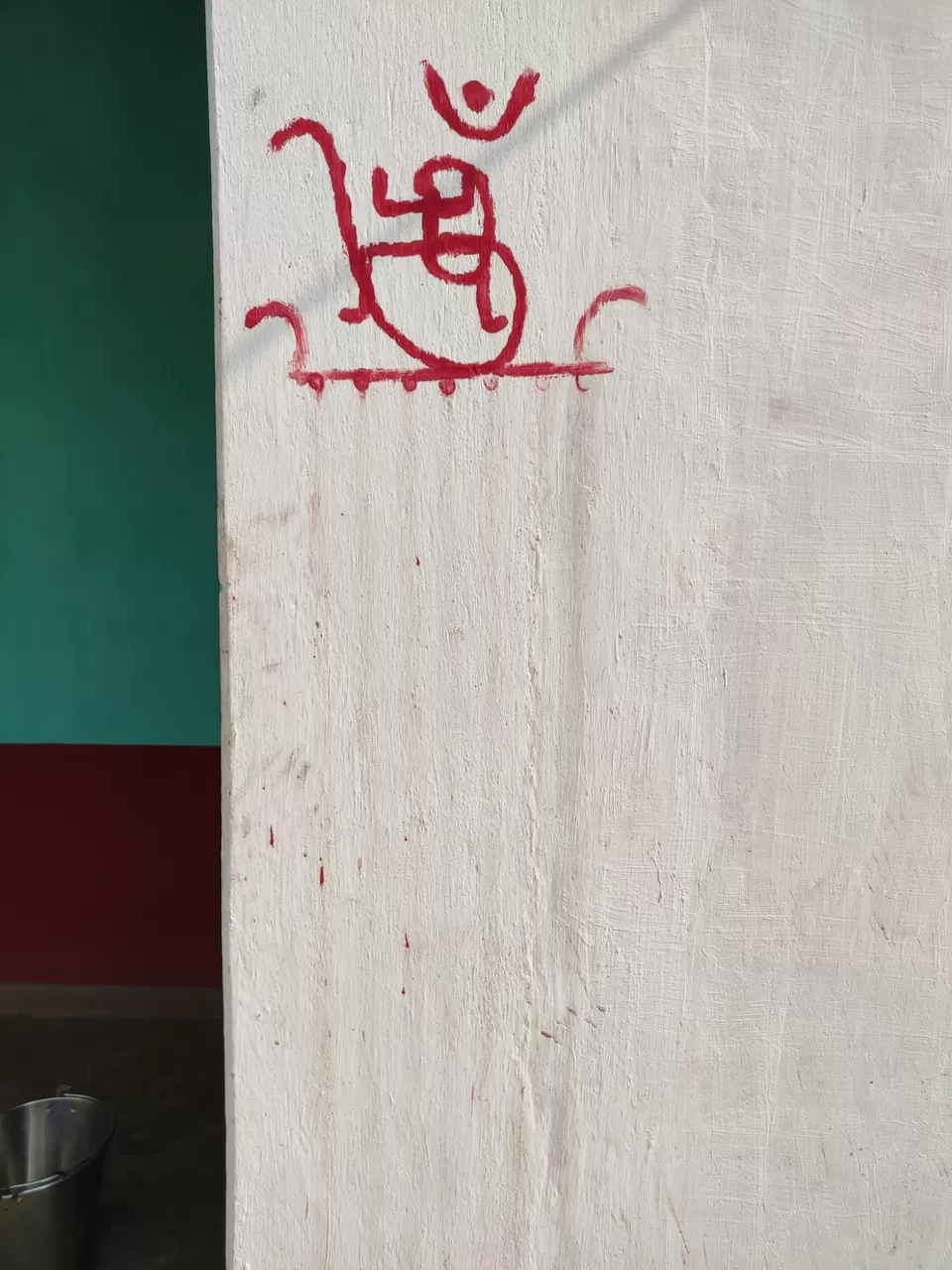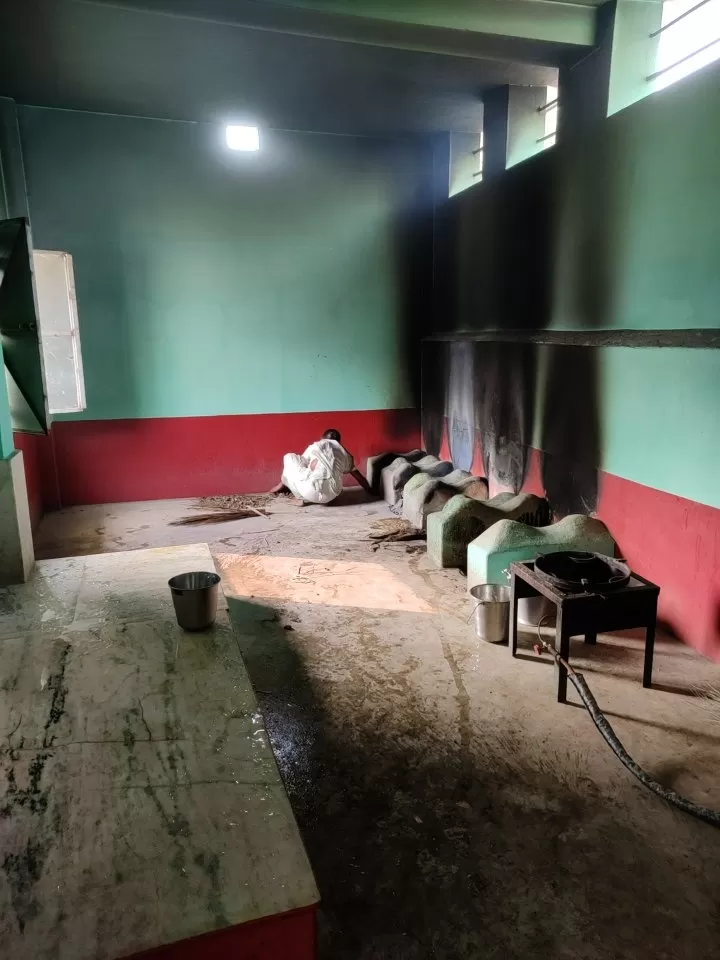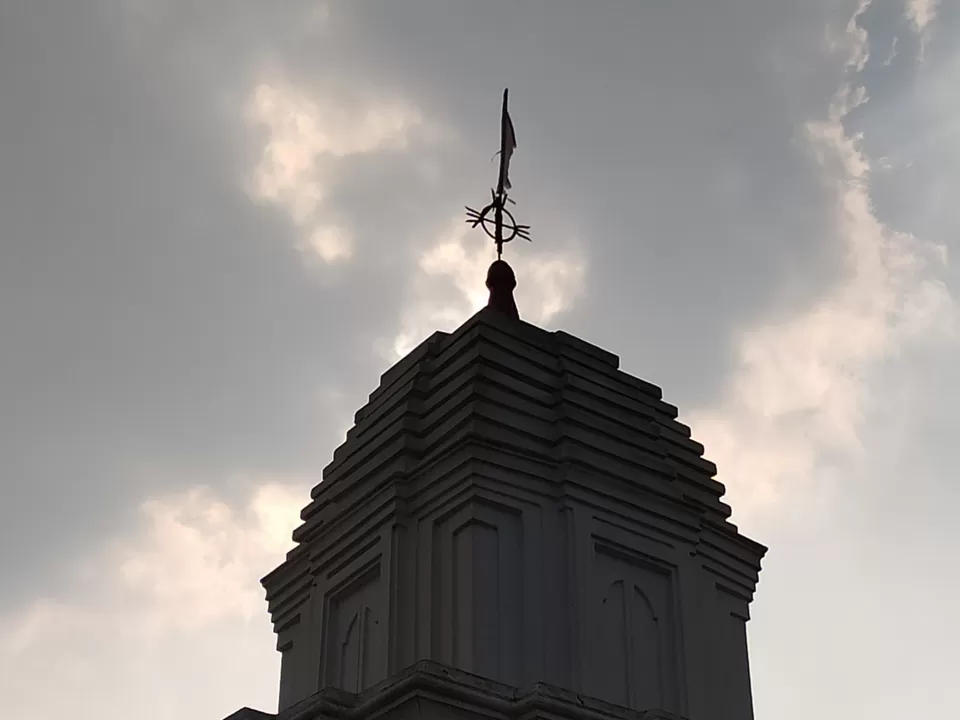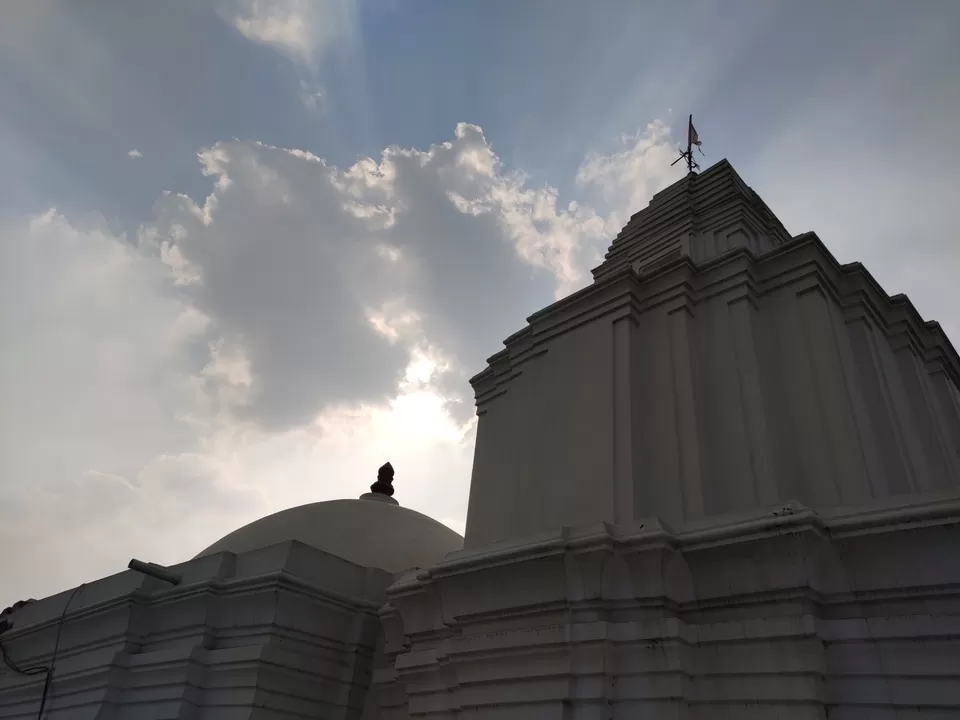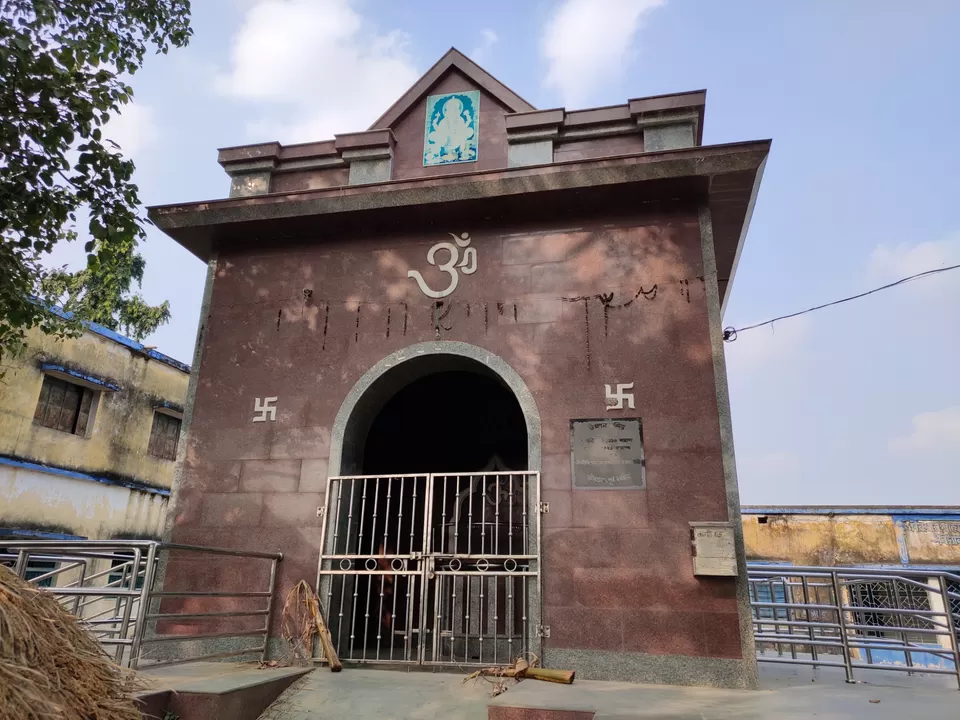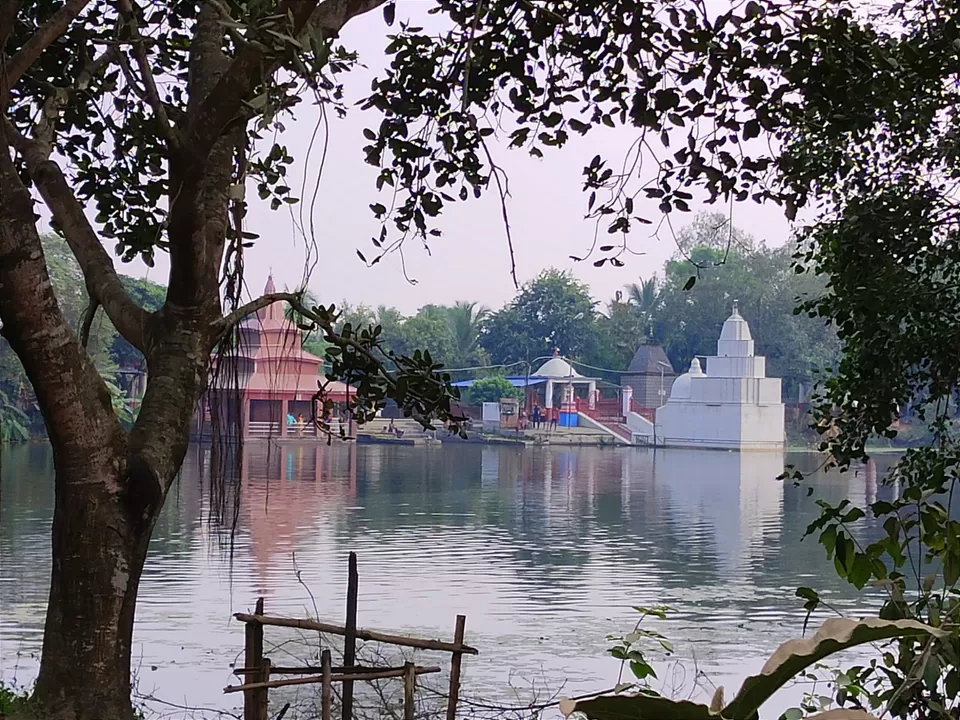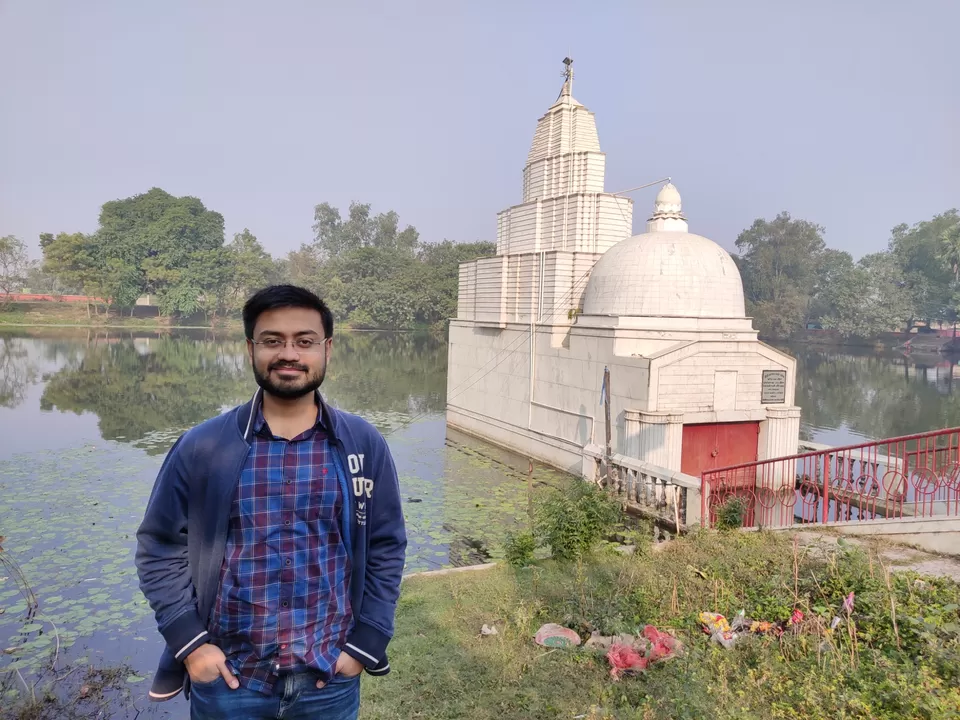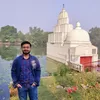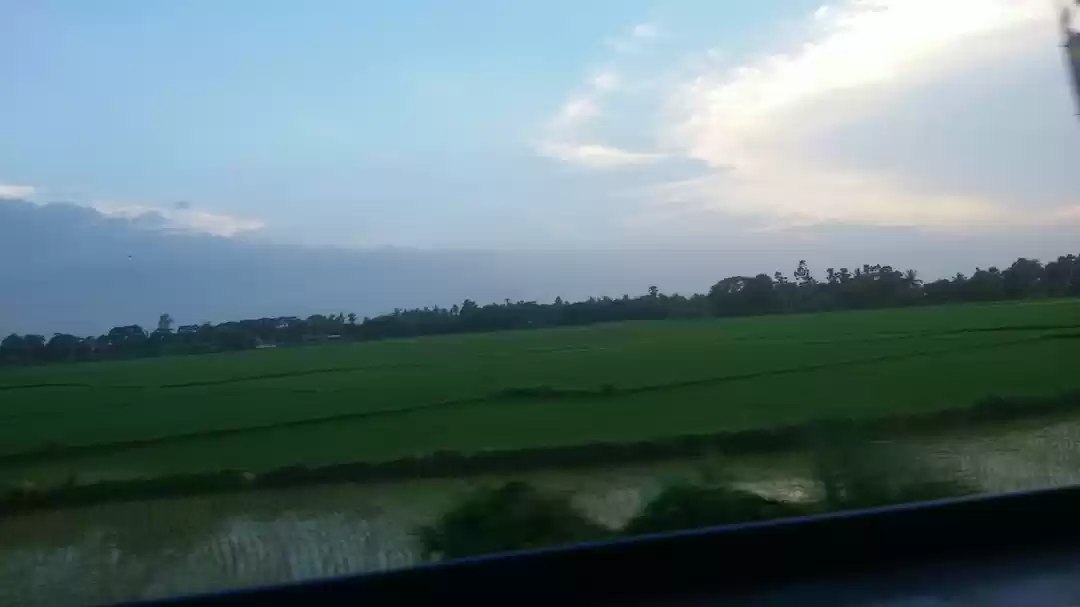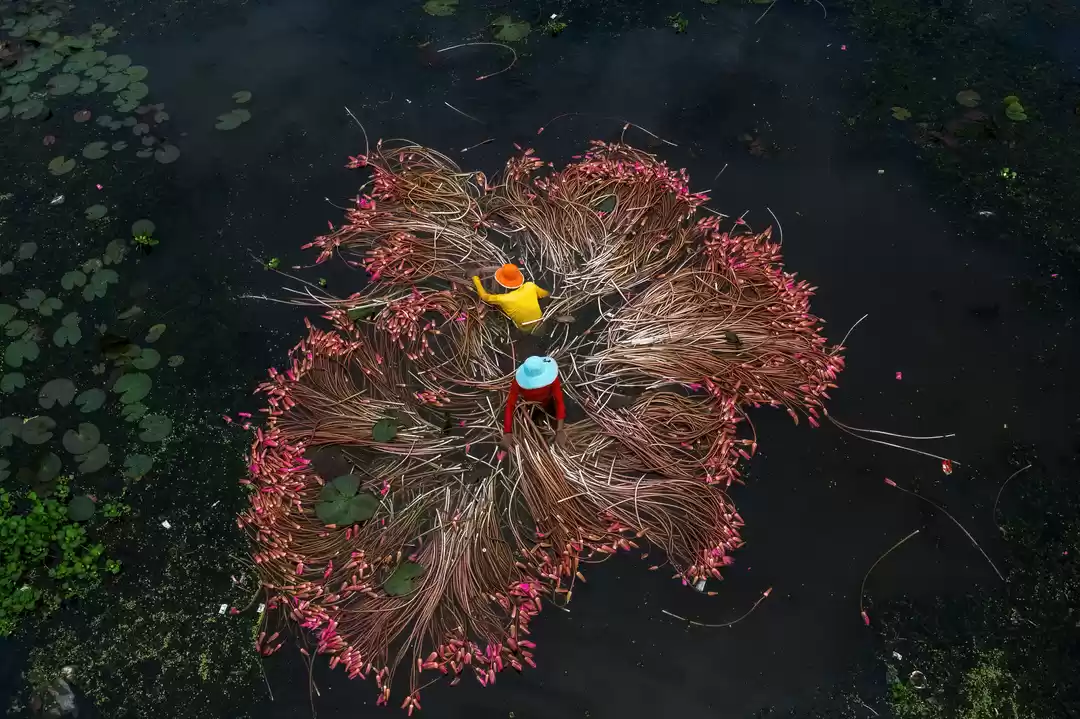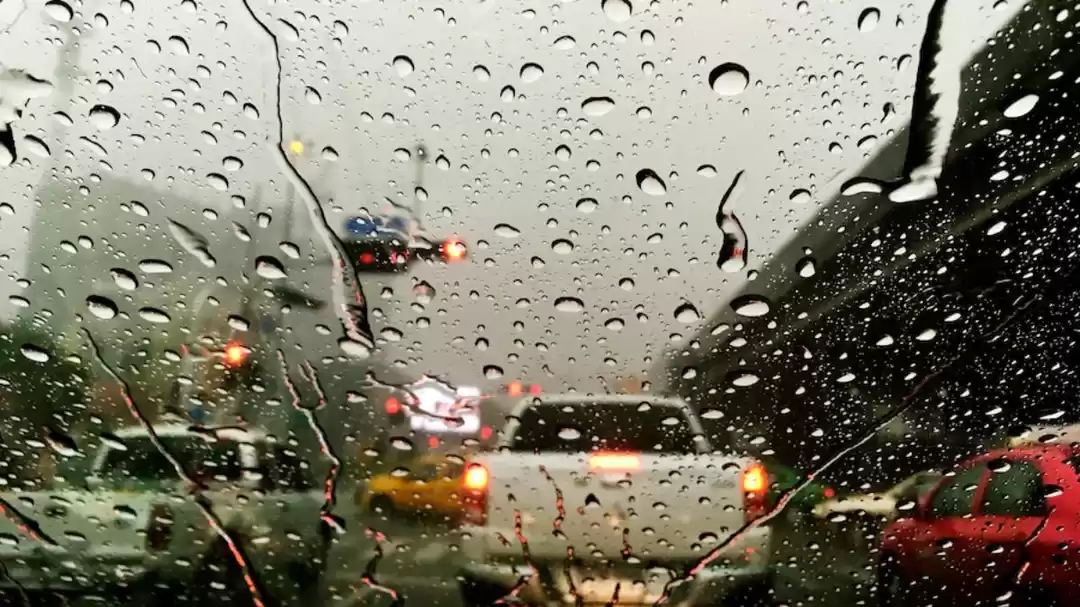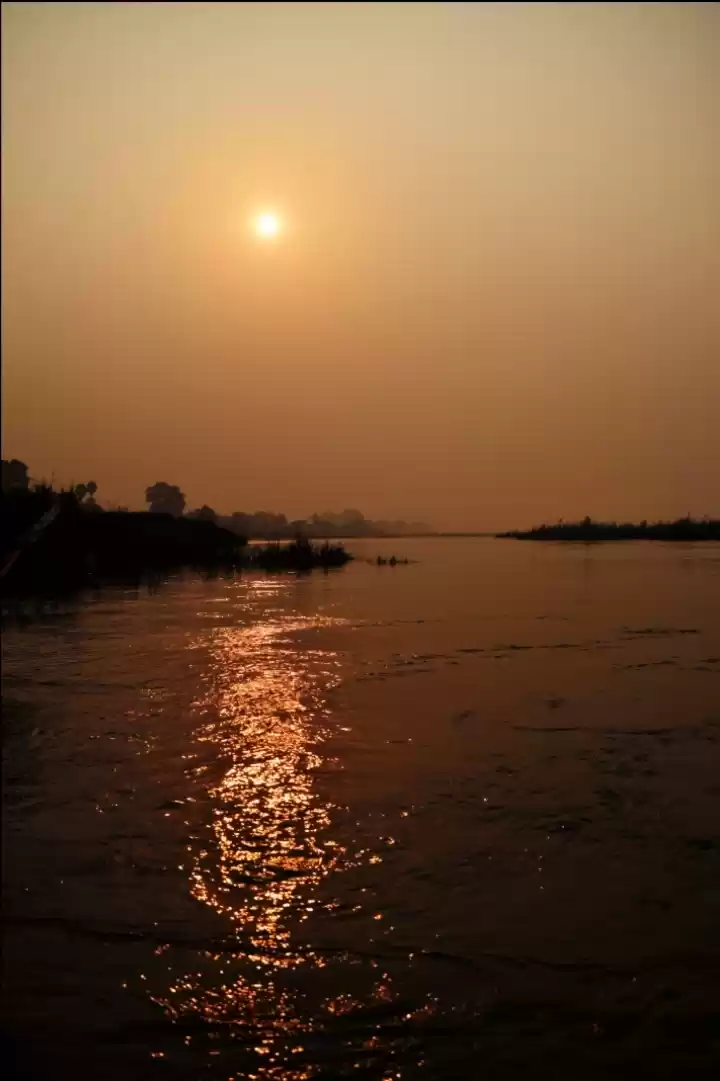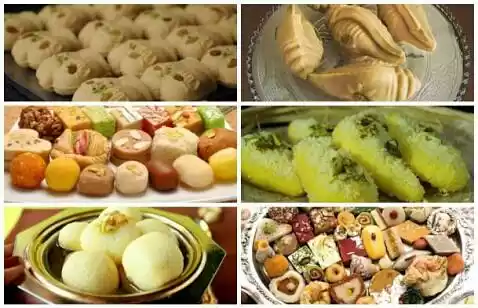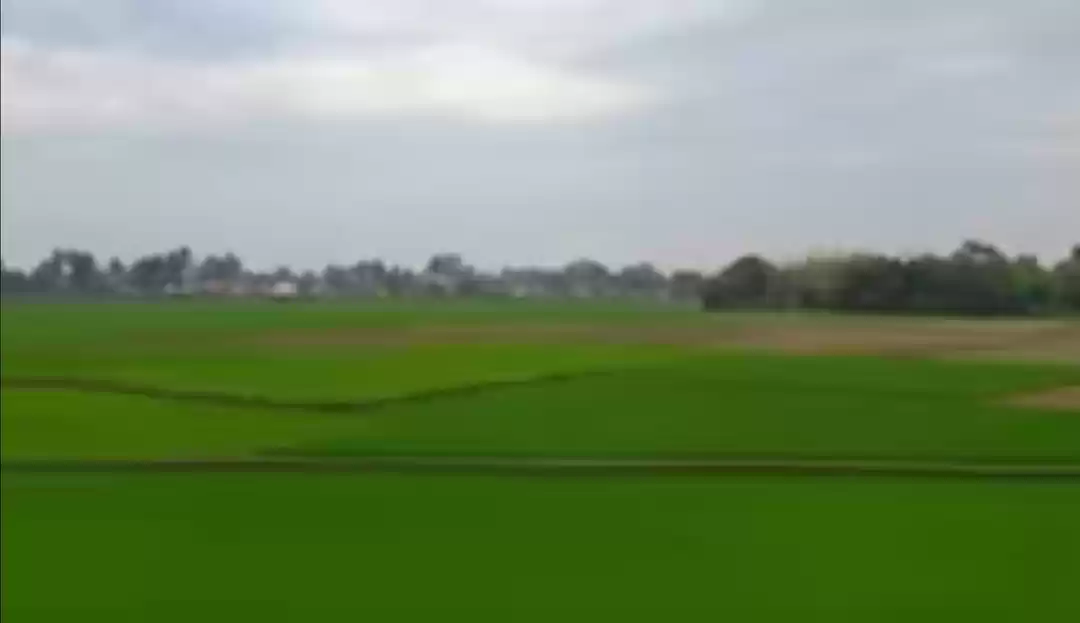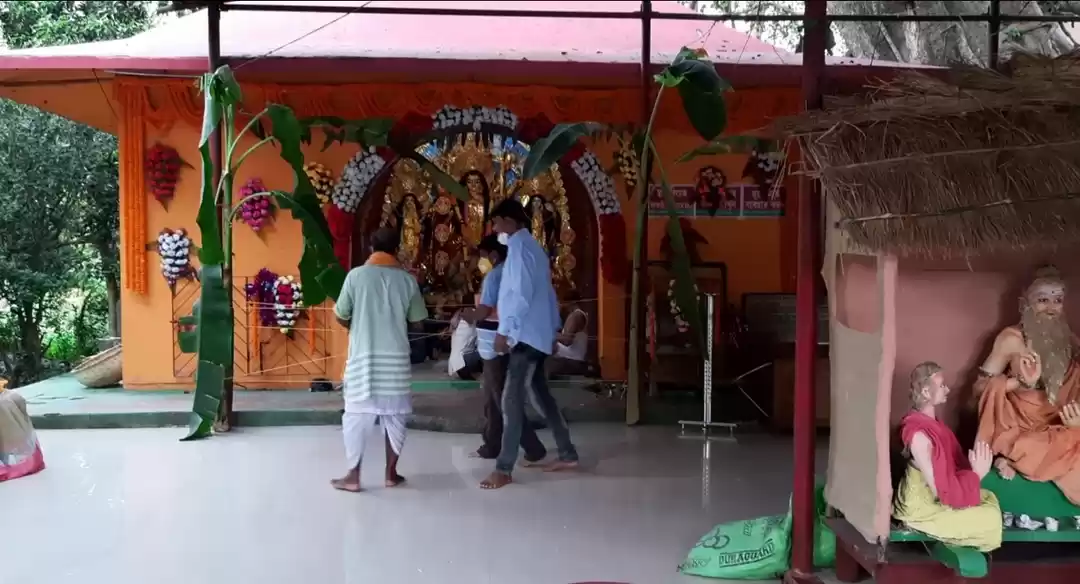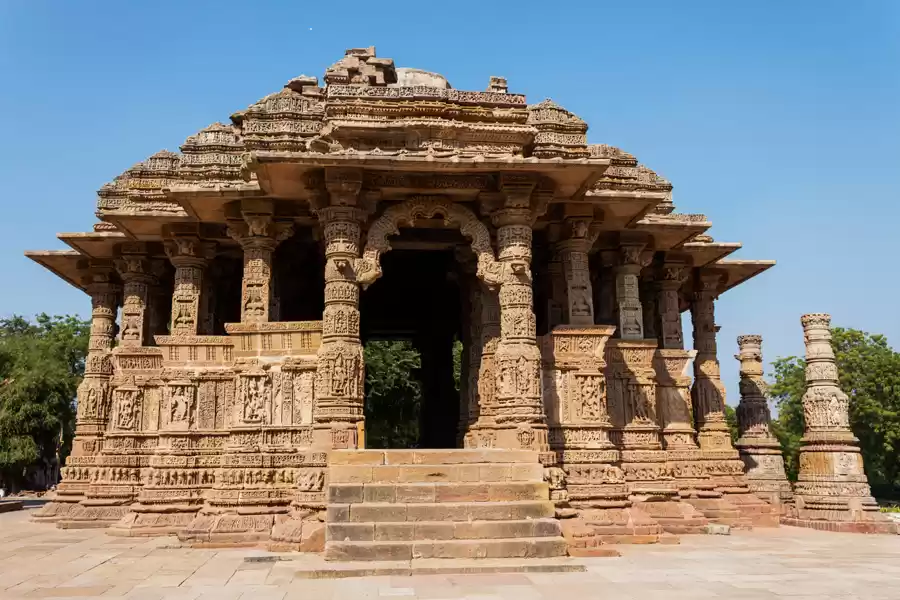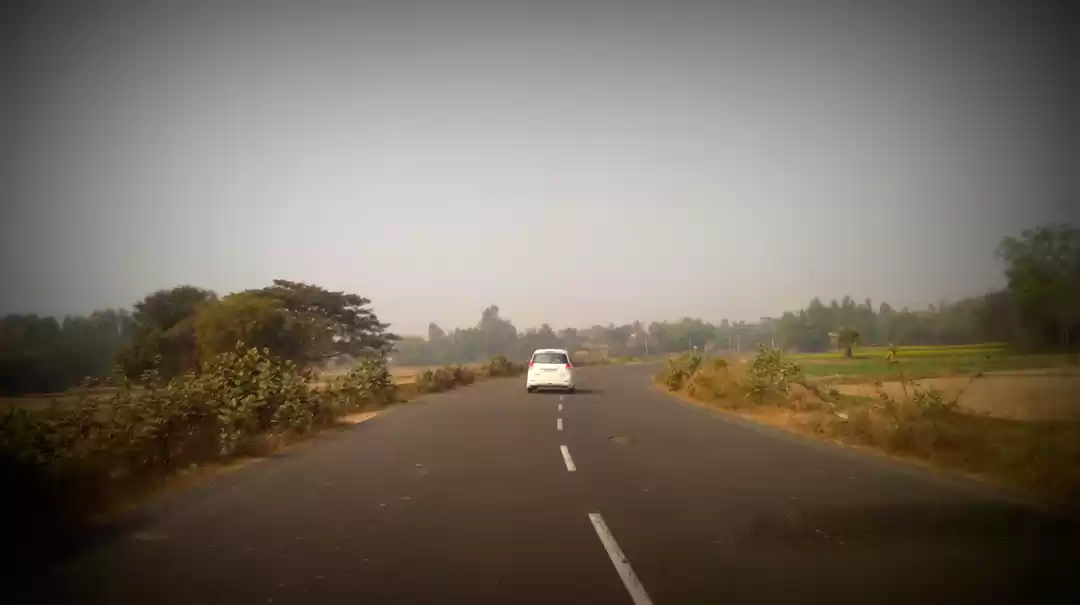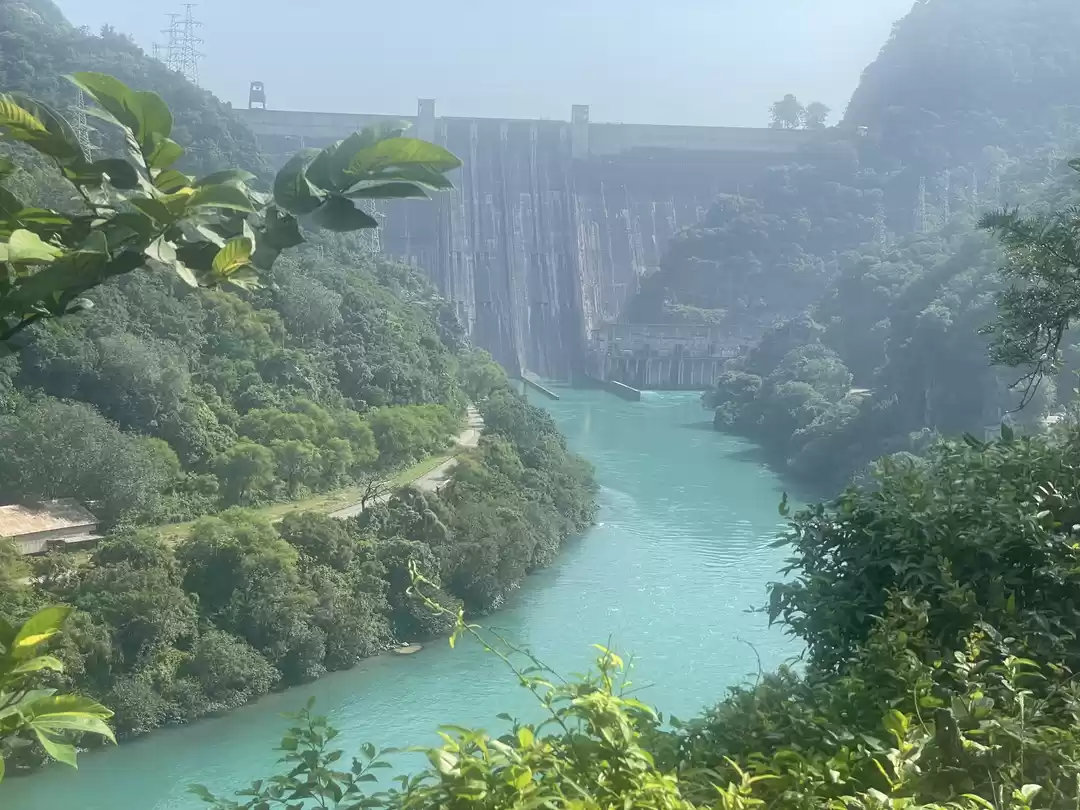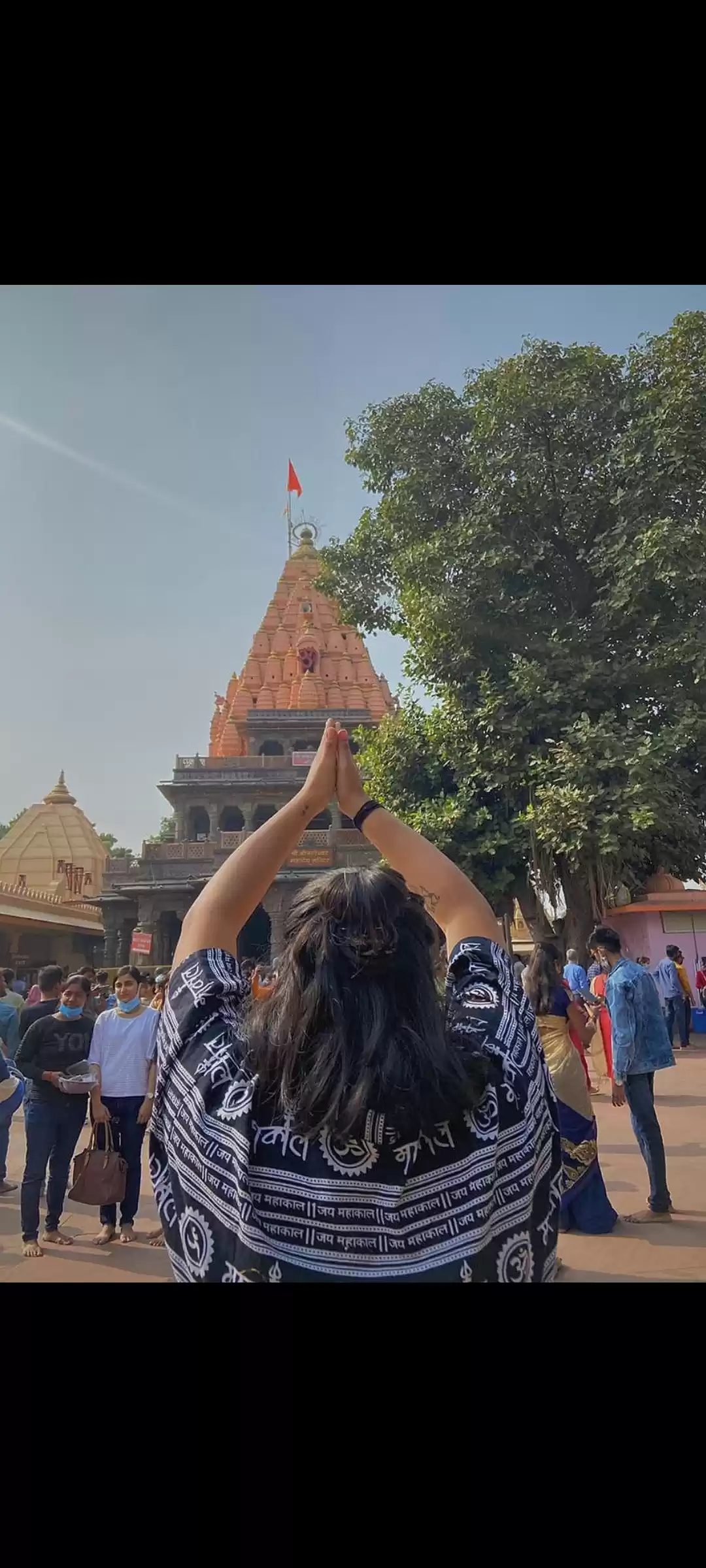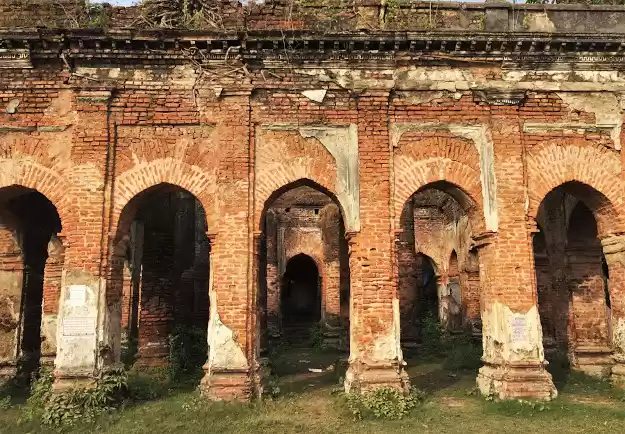
I have always been fascinated by Shaktipiths, and Bengal is dotted with them. So, on 24th December, 2021, I and my friend cum junior, Sayantan Ghosh Choudhury planned to visit the Shree Maa Jogadya Shaktipith located in the Kshirgram village of West Bengal, which is just 40 kms away from Barddhaman. We boarded the Barddhaman-Katwa Local of 7 am, and reached Kaichar Halt Railway Station at 7:50 am (train fare : ₹10) It was a chilly and foggy morning. There were toto drivers calling for Kshirgram Bus Stand, so we got into one. It's around 4 kms away from the station. The road was in a very dilapidated condition, and the place was a remote one. As we had a plan to offer prayers there, so hadn't had our breakfasts. We reached there by 8:30 am, and took a narrow road which goes inside the village. As instructed by the toto driver, we got to see a large lake on the other side of the road, fenced by a red boundary wall. It was Kshirdighi. We clicked a few snaps there, and worshipped the water as it's very auspicious. A cute dog was accompanying us all our way to the temple, that acted like our guide, and even stopped and waited wherever we stopped to click pictures. Then we went to the temple complex located on the bank of the Kshirdighi.
There was no one in that complex at that time, and the temple was also closed, so we decided to go to the second complex.
Actually, there are three temples located in two complexes within the same village.
The first complex is just near the Kshirdighi. There are two temples of Maa Jogadya in this complex.
One is of white marble, partially submerged in the water of the lake, which is kept locked for whole year, except for 3 days (Boishakh Shonkranti and two days in Joishtho). The stone idol of Maa Jogadya, built by Nabin Bhaskar of Dainhat in the 19th century is kept under water.
Another one is a brown temple, built in 2000s, where the original old idol of Maa Jogadya is kept and worshipped daily.
The second one is just 500 m away from the first one. It was rebuilt by King KirtiChand of Burdwan Raj in the 1770-80, as the original temple of 11th century was destroyed by Kalapahar.
That complex was also very calm and there were no one around, except for an old lady and her playful grandson. She introduced herself as one of the family members of the sebaits of the temple, and narrated the legend and history behind Kshirgram and the Shaktipith.
History behind the temple/Shaktipith :
This is one of the 51 Holy Shaktipiths and the one where Maa Sati’s right toe had fallen. Here Lord Shiva is known as Kshirakantha/Kshireshwar.
According to Ramayana, MahiRavan had kidnapped Lord Ram & Lakshman and kept them in Paataal. MahiRavan was a devotee of Goddess Bhadrakali. Lord Hanuman went to Paataal and escaped from there along with Lord Ram and Lakshman by killing MahiRavan, during that time Lord Hanuman also took the idol of Devi Bhadrakali and set up the idol in Kshirgram. Later, Devi Bhadrakali was renamed as Jogadya. According to Shaktism, this temple is regarded as the centre of the earth. (The second complex)
It is said that Nabinchandra Bhaskar, an architect of Daihat sculpted the idol of the main temple. Even today the inner sanctum (the marble temple of the first complex) houses the idols he had built. It is believed that the deity remains submerged under the Kshirdighi, a nearby pond of the shrine. On every Boishakhi Shonkranti, she comes out of the water and stays overnight inside the temple's inner sanctum. After yajnas and the special pujas, she again gets back into the water of the Kshirdighi where she stays with Lord Kshirakantha, her husband and an incarnation of Lord Shiva. The devotees believe that according to the old legends, the same practices are carried on since ages.
She told us that the puja starts there at 10 am, so we roamed around the complex and bought sweets for the offering beforehand. There's a Radha-Krishna temple also, at the backside of the complex. At 10 o' clock, the purohit came and introduced himself and asked us where are we from. After the aarati, we offered our prayers. There's a red coloured platform (called Bedi in Bangla) in the garbhagriha, which denotes the place from where Lord Hanuman had brought the goddess from the "paataal" to earth on his shoulders. No idol of Devi Jogadya or not even a picture of Devi has been set up there in the temple.
We paid the purohit for the bhog (₹50 per person), which he told us would be served at 1 pm, and asked us to explore the village and a large lake nearby called "Dhamchi". As per the purohit, the bhog of the second complex is non-vegetarian, as the goddess gets pleased with non-vegetarian bhog only, and the bhog of the first complex is pure vegetarian (₹40 per person). We then went outside the temple, ate some Mondas (Monda is a Bengali sweet just like Sandesh, which is usually offered in temples) which we had offered to the goddess, and went to the first temple. That temple had opened by that time, and we were lucky enough to see the aarati in that temple. A guy who was ringing the bell asked me to ring the bell during the aarati, which I did whole heartedly. After the aarati, he asked us to worship the goddess in the garbhagriha (where outsiders are not allowed). The idol is 3 to 4 feet high made of Koshti Pathor, intricately designed as seen in the idols made during Pala era of Bengal.
There's a corridor behind the temple, from where people feed the fishes of the Kshirdighi. We stood there for a while, and kept seeing innumerous Katla and Rui fishes in the lake. Villagers believe them to be auspicious, so they don't catch them. A rare scenario in Bengal ! From there, we went to a sweet shop outside the temple, ate some freshly fried Aalur Chops.
Then we started walking towards the western side of the village. After about half a kilometre, there were no houses around, and there were vast fields on both sides of the road. That was the time of the year when paddy is harvested, so the fields were just clear and dusty, and everyone in the village was busy in thrashing and drying the paddy. I haven't walked on such a village road ever in my life, so it was quite unique and peaceful on my part. Sayantan was sharing his stories and experiences when he goes to his native village. He told me why he loves villages more than the city life. By now, we entered the other part of Kshirgram, but it seemed that there was no path to go to Dhamchi, as all the four sides of the lake was taken on lease by a person, who cultivates fruits and vegetables there. On asking a local, we got to know, that there's a ghat on the northern side of the lake and we have to walk for another 1 km to reach there. While asking that local, unfortunately a crow pooped on my head. In a frustrated and anger manner, I kept washing my head and spectacles for 5 minutes, and then walked to the ghat. There was a fenced garden around the road to the ghat. Finally we reached the ghat of Dhamchi. It's a vast lake, around two times of Krishna Sayer of Barddhaman. It was so peaceful there. We spent some time in silence, watching some migratory birds, and the waves on the waters of the lake. There were some boats tied at the bank. While returning, we trespassed the garden and clicked some pictures there, and then returned back to the first temple complex. Visited that premises again, and then explored the village, as we still had time left for the bhog. Every Shaktipith has its own KaalBhairav Temple, who is considered as the consort of the goddess of that Shaktipith. Kshirkantha Shiv Temple is the KaalBhairav Temple associated with the Maa Jogadya Shaktipith. We went there. It's a very tall temple, renovated just a couple of years back. Some youngsters of that village were chitchating there. One can view whole village from that temple. It was so refreshing there, after walking so much on that sunny day.
While returning to the temple complex, we saw a Durga Mandap and Gopinath Temple. The Durga Mandap was a typical do-chala structure, supported by wooden pillars, well preserved and decorated. A Durga/Chandi Mandap is a typical structure where goddess Durga is worshipped during the four days of Durga Pujo. Such mandaps are very common in villages of Bengal. Most of the houses there were made of mud, and were double-storeyed, constructed in the typical Bengali architecture with chala type terrace. It was very astonishing on my part, that how could the first floor be made out of mud and straws, which I saw for the first time. There was a lady sitting in front of one of those houses, who started chatting with us and told us many interesting facts about the temple and the village. She told us that no Durga idol is worshipped in that Durga Mandap, and infact in that village during Durga Pujo, instead they worship the KolaBou or the banana plant as Maa Durga, and no one in that village even keeps a photograph of Maa Durga or any other goddess in their houses, as it's believed to be ominous, and the only goddess which can be worshipped there is Maa Jogadya. She also told us that a large fair is organised during Boishakh Shonkranti, and many famous personalities visit the village during that time, and the bhog in the second temple complex (where we were going to have bhog) is prepared in the traditional Shakta manner, where the vegetables and fish are not stirred after putting in the utensils, and are just left to boil with salt and spices. She also asked us not to keep any photograph of Maa Jogadya with us, as it's also ominous ! After a brief encounter with that lady, we finally returned to the temple. We were on right time, and the purohit made us sit in the premises. There were just 6 or 7 people including us, who had come to have bhog there. There was rice, a curry made of potatoes, raw bananas and beans, and payesh in the bhog. As we were told, the bhog includes a fish there, so we asked the purohit about it, and he replied that they don't cook fish daily and mix the bhog with the water put in a utensil which is used to cook non-vegetarian food, thus making the bhog non-vegetarian ! He sounded contrasting and befooling at the same time, but we had nothing to do.
After having our bhog, we visited the kitchen where the bhog is prepared everyday. There were four earthen ovens (called "unun" in Bangla) and one gas stove and a number of brass utensils. We relaxed in the premises for half an hour, and then started our return journey. As the next train was at 4:20 pm, and it was just 2 o' clock, so we had decided to return to Barddhaman by bus.
While going towards the bus stop of the village, we saw the "Utthaan Mandir", where the idol of the goddess is kept for 3 days, which is otherwise kept submerged in water. Asked some locals about the path to the bus stop, and went there. On enquiring about the next bus to Barddhaman, a shopkeeper there told us that the next bus is at 2:35 pm named "Allah'r Daan" (Yes, every bus playing in rural Bengal have a particular name which is painted on it, and people call them by those names only).
We waited there for a few minutes, and then the bus arrived (bus fare : ₹40). We sat on the last seat, and the road upto Kaichar was in a very dilapidated condition, so it was really very tiring to bear those jolts ! After 15 minutes, it reached Kaichar and from then onwards, the road was good. The bus went through many small towns and Chourastas, and finally we reached Barddhaman at 3:50 pm. We got off at Sun Hospital, and walked to our rooms, as it's just 1 km from that stop. I was tired, but I knew I won't be able to rest, as it was Christmas Eve and my friends had given me the task of managing wood for the bonfire, which we were going to organize that night. Such a happening life, isn't it ! Haha !
Anyways, in this way, our day trip to a Shaktipith ended well. Looking forward to more such day trips in the future.
